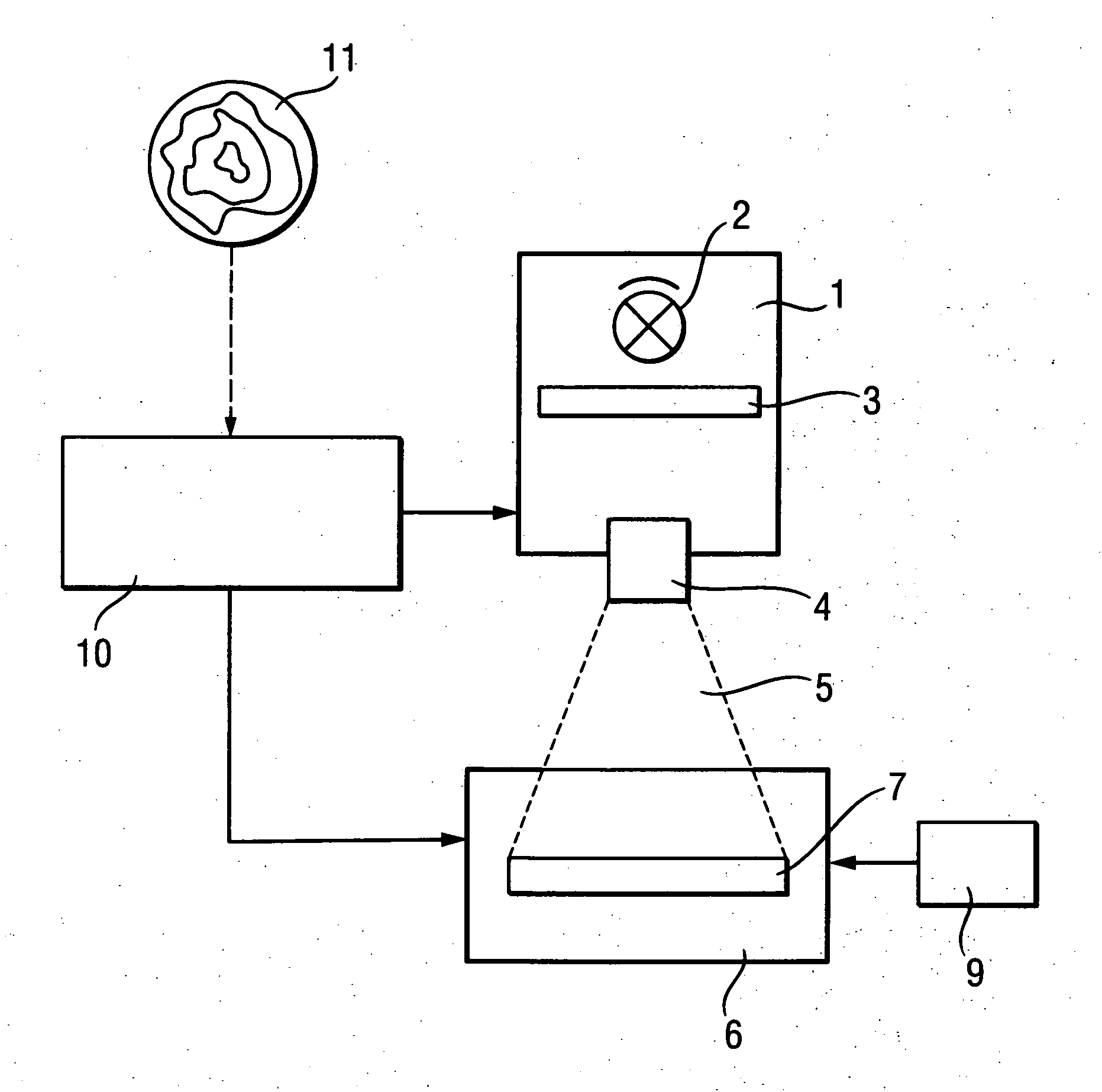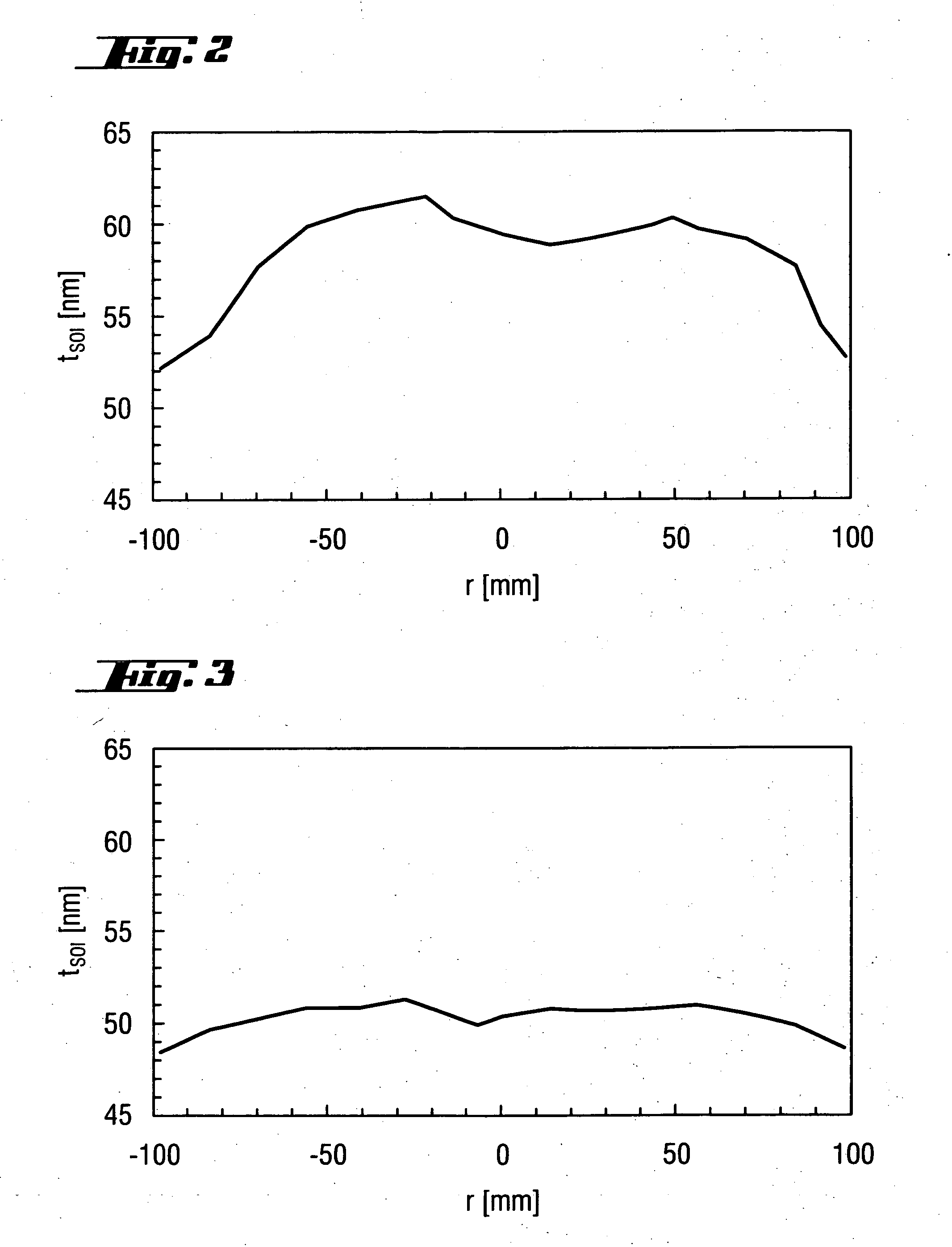Method and apparatus for leveling a semiconductor wafer, and semiconductor wafer with improved flatness
a technology of semiconductor wafers and flatness, which is applied in the direction of semiconductor devices, solid-state devices, testing/measurement of semiconductor/solid-state devices, etc., can solve the problems of complex process in terms of equipment required, disruptive edge roll off, and inability to ensure the flatness required for the ever-decreasing line. , to achieve the effect of improving nanotopography, improving the uniformity of layer thicknesses, and improving flatness
- Summary
- Abstract
- Description
- Claims
- Application Information
AI Technical Summary
Benefits of technology
Problems solved by technology
Method used
Image
Examples
example 1
[0096] An SOI wafer with a diameter of 200 mm, produced by transferring a silicon layer from a donor wafer to a base wafer, is treated. The thickness of the wafer is 730 μm, the thickness of the silicon oxide layer is 140 μm, and the target thickness of the silicon layer located on the silicon oxide layer is 50 nm.
[0097] In step a), the thickness of the silicon layer is measured accurately in a position-dependent manner by means of an interferometer. The measurement with 4000 measurement points and an edge exclusion of 1 mm gives a mean layer thickness of 58.3 nm with a standard deviation of 2.9 nm and a difference of 9.4 nm between maximum and minimum layer thickness. FIG. 2 illustrates a thickness profile along a diameter, i.e. the thickness tSOI of the semiconductor layer, measured in the unit nm, as a function of the radial position r, measured in the unit mm. The thickness measured values are stored in a computer and converted into a grayscale contrast filter. Positions with a...
example 2
[0100] In step a), the local flatness of 6 silicon wafers with a diameter of 300 mm, which were produced from a Czochralski-pulled, boron-doped (1-10 Ωcm) single crystal, and had been subjected to stock-removal polishing, measured with an edge exclusion of 1 mm. The measuring unit ADE 9900 E+ is used, and the size of the surface elements is 26×8 mm2. Table 1 shows the measured SFQRmax values including partial sites.
[0101] The unprocessed data (individual measured values) from the ADE measurement are stored in a computer and converted into a grayscale contrast filter, and a corresponding filter is produced for each silicon wafer. Then, the silicon wafers are introduced into the etching chamber individually, as described in Example 1, and subjected to an etching treatment on one side for leveling purposes using the associated filter. The etching medium used is an aqueous solution of 1% HF and 20 ppm O3. The silicon wafers are treated for approximately 10 minutes at room temperature, ...
PUM
| Property | Measurement | Unit |
|---|---|---|
| size | aaaaa | aaaaa |
| size | aaaaa | aaaaa |
| size | aaaaa | aaaaa |
Abstract
Description
Claims
Application Information
 Login to View More
Login to View More - R&D
- Intellectual Property
- Life Sciences
- Materials
- Tech Scout
- Unparalleled Data Quality
- Higher Quality Content
- 60% Fewer Hallucinations
Browse by: Latest US Patents, China's latest patents, Technical Efficacy Thesaurus, Application Domain, Technology Topic, Popular Technical Reports.
© 2025 PatSnap. All rights reserved.Legal|Privacy policy|Modern Slavery Act Transparency Statement|Sitemap|About US| Contact US: help@patsnap.com



